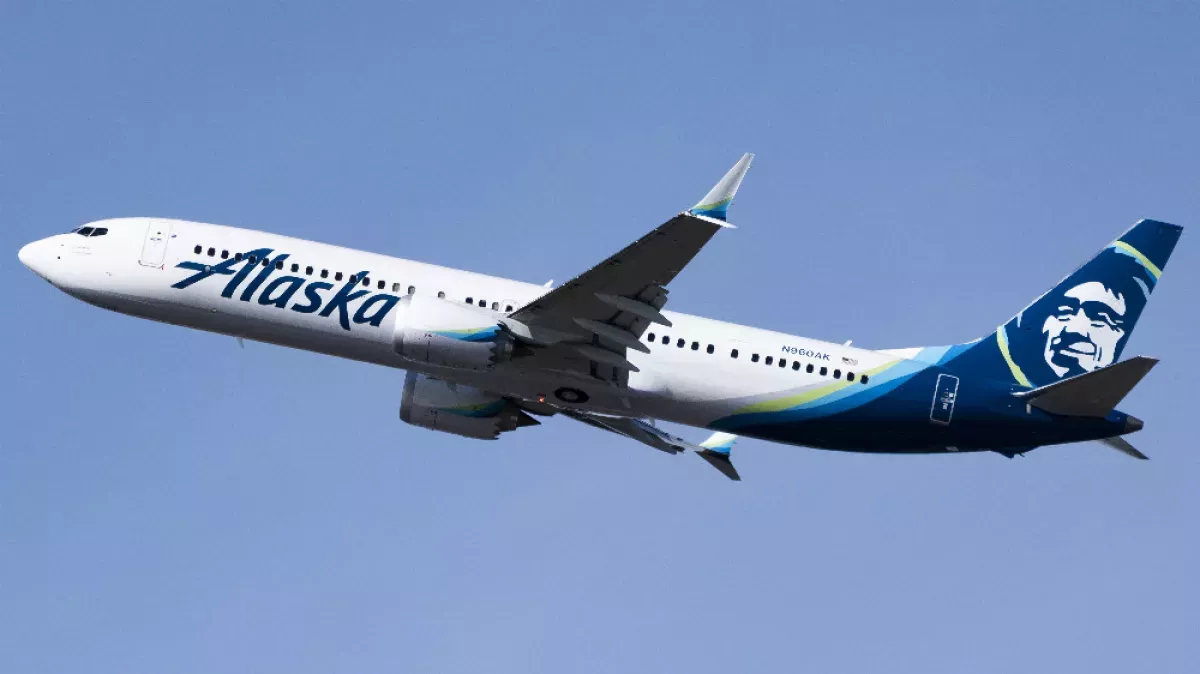The Boeing 737 MAX is the latest iteration of the Boeing 737, a narrow-body airliner, succeeding the Next Generation, Classic, and Original models. Announced in 2011, it first flew in 2016 and was certified by the FAA in March 2017. The first delivery was a MAX 8 to Malindo Air, which began operating it in May 2017. It directly competes with the Airbus A320neo family.
April 9, 1967: Maiden Flight of the Original 737-100
On April 9, 1967, the original 737-100 completed its maiden flight, marking the beginning of the Boeing 737 family.
December 15, 1967: Airworthiness Approval for 737 Legacy Series
On December 15, 1967, the 737 legacy series received its initial airworthiness approval. The 737 MAX gained its approval based on this series.
2006: Boeing Considers 737 Replacement
In 2006, Boeing began considering replacing the Boeing 737 with a "clean sheet" design, potentially following the Boeing 787 Dreamliner.
March 2010: Estimated Cost to Re-engine 737
In March 2010, Boeing estimated the cost to re-engine the 737 to be US$2–3 billion, including the CFM engine development.
June 2010: Boeing Postpones Decision on 737 Replacement
In June 2010, Boeing executives postponed the decision regarding the replacement of the 737 aircraft with a new design.
December 1, 2010: Airbus Launches A320neo Family
On December 1, 2010, Airbus launched the Airbus A320neo family, offering better fuel economy and operating efficiency compared to the 737 NG due to its advanced engines.
February 2011: Boeing CEO Announces Plans for a New Airplane
In February 2011, Boeing CEO Jim McNerney announced that the company was planning to develop a new airplane as part of its Yellowstone Project, intended to replace the 737.
March 2011: Boeing Considers Re-engining 737
In March 2011, Boeing CFO James A. Bell mentioned the possibility of re-engining the 737. However, later that month, Boeing Commercial Airplanes President James Albaugh indicated uncertainty about this approach.
June 2011: Airbus A320neo Gains Record Orders at Paris Air Show
At the June 2011 Paris Air Show, the Airbus A320neo received 667 commitments, bringing its total order backlog to 1,029 aircraft, setting an order record for a new commercial airliner.
July 20, 2011: American Airlines Orders Airbus and Boeing Jets
On July 20, 2011, American Airlines announced an order for 460 narrow-body jets, including 130 A320ceo, 130 A320neo, and 100 737NG. The airline also stated it would order 100 re-engined 737s with CFM LEAP engines if Boeing pursued that project.
August 2011: Boeing Announces 737 MAX Series
In August 2011, Boeing announced the Boeing 737 MAX series, marking the beginning of the fourth generation of the Boeing 737. This new series was designed to succeed the Boeing 737 Next Generation (NG), Boeing 737 Classic, and Boeing 737 Original models, aiming to compete with the Airbus A320neo family.
November 17, 2011: 700 commitments from nine customers
By November 17, 2011, there were 700 commitments from nine customers for the Boeing 737 MAX, including Lion Air and SMBC Aviation Capital.
December 2011: 737 MAX had 948 commitments and firm orders
By December 2011, the Boeing 737 MAX had 948 commitments and firm orders from thirteen customers.
2011: Southwest Airlines Signed as Launch Customer for 737 MAX
In 2011, Southwest Airlines was signed up as the launch customer for the 737 MAX, marking a significant step in the program's development and market introduction.
January 2012: Bernstein Research Predicts Higher Development Costs for 737 MAX
In January 2012, Bernstein Research predicted that the development cost for the 737 MAX would be twice that of the A320neo, estimating it closer to US$4 billion.
2013: Firm Configuration Scheduled for 737 MAX
In 2013, the firm configuration for the 737 MAX was scheduled to be finalized, marking a key step in the aircraft's development.
September 8, 2014: Ryanair agreed to 100 firm orders
On September 8, 2014, Ryanair agreed to 100 firm orders with 100 options for the Boeing 737 MAX.
November 2014: Plans for a New 737 Replacement by 2030
In November 2014, Boeing indicated that the 737 would likely be replaced by a new airplane by 2030. This new aircraft would be slightly larger, use composite materials, and have new engines, while retaining the 737's general configuration.
August 13, 2015: First 737 MAX Fuselage Assembly Completed
On August 13, 2015, the first 737 MAX fuselage was completed at Spirit Aerosystems in Wichita, Kansas. This fuselage was intended for a test aircraft that would eventually be delivered to Southwest Airlines, the launch customer.
December 8, 2015: Rollout of First 737 MAX
On December 8, 2015, the first Boeing 737 MAX, named 'Spirit of Renton', was rolled out at the Boeing Renton Factory.
January 2016: First Flight of the Boeing 737 MAX
In January 2016, the Boeing 737 MAX completed its first flight. This event marked a significant milestone in the development of the new narrow-body airliner.
January 29, 2016: First Flight of 737 MAX
On January 29, 2016, the first 737 MAX took its maiden flight at Renton Municipal Airport, nearly 49 years after the first flight of the original 737-100.
October 2016: BBJ MAX 7 unveiled
In October 2016, the BBJ MAX 7 was unveiled, with a 7,000 nmi range and 10% lower operating costs than the original BBJ, while being larger.
January 2017: GECAS ordered 75
In January 2017, aircraft leasing company GECAS ordered 75 Boeing 737 MAX aircraft.
March 8, 2017: FAA Certifies the 737 MAX 8
On March 8, 2017, the FAA certified the Boeing 737 MAX 8, marking a crucial step in its regulatory approval process.
March 2017: FAA Certifies the Boeing 737 MAX
In March 2017, the US Federal Aviation Administration (FAA) certified the Boeing 737 MAX. This certification was a crucial step before the aircraft could be delivered to customers and begin commercial operations.
March 27, 2017: EASA Approves the 737 MAX 8
On March 27, 2017, the European Union Aviation Safety Agency (EASA) approved the Boeing 737 MAX 8, expanding its operational authorization to Europe.
April 2017: CFM Notifies Boeing of Potential Issue with LEAP-1B Engines
In April 2017, after completing test flights, CFM International notified Boeing of a possible manufacturing quality issue with low-pressure turbine (LPT) discs in LEAP-1B engines, leading to temporary suspension of 737 MAX flights.
May 2017: First 737 MAX Delivered to Malindo Air
In May 2017, the first Boeing 737 MAX, a MAX 8, was delivered to Malindo Air. Malindo Air accepted the aircraft and began operating it in the same month, marking the operational debut of the 737 MAX series.
May 16, 2017: First 737 MAX 8 Delivered to Malindo Air
On May 16, 2017, the first 737 MAX 8 was delivered to Malindo Air (now Batik Air Malaysia), marking a significant milestone in the aircraft's entry into commercial service.
July 15, 2017: Norwegian Air International Operates First Transatlantic Flight with 737 MAX 8
On July 15, 2017, Norwegian Air International performed its first transatlantic flight with a 737 MAX 8 named Sir Freddie Laker, flying between Edinburgh Airport in Scotland and Bradley International Airport in Connecticut, U.S.
August 29, 2017: Southwest Airlines Takes Delivery of First 737 MAX
On August 29, 2017, Southwest Airlines, the launch customer, took delivery of its first Boeing 737 MAX. Boeing aimed for the 737 MAX to match the 99.7% dispatch reliability of the 737 Next Generation (NG).
2017: Boeing Increases 737 MAX Production Rate
In 2017, Boeing increased its 737 MAX monthly production rate to 42 planes. They implemented a new spar-assembly line with robotic drilling machines and an automated panel assembly line to speed up wing assembly.
2017: Boeing Switches to Composite Parts for Thrust Reversers
In 2017, Boeing switched to a composite part produced by Spirit for the thrust reversers of the 737 MAX, because GKN couldn't produce the titanium honeycomb inner walls quickly enough. The switch supported Boeing's goal to deliver 47 MAXs per month.
February 2018: Variant configuration firmed up
In February 2018, the variant configuration of the Boeing 737 MAX was finalized.
April 16, 2018: BBJ MAX 8 first flew
On April 16, 2018, the BBJ MAX 8 first flew, before delivery later the same year, and has a range of 6,640 nmi with an auxiliary fuel tank.
August 2018: Assembly underway
As of August 2018, the assembly of the Boeing 737 MAX was underway with the first flight planned for late 2019 and entry into service slated for July 2020.
August 2018: Production Strains Affect 737 MAX Deliveries
By August 2018, the increased production rate strained the production of the 737 MAX. Over 40 unfinished jets were parked in Renton, awaiting parts or engine installation due to late deliveries of CFM Leap-1B engines and Spirit fuselages.
October 29, 2018: Lion Air Flight 610 Crash
On October 29, 2018, Lion Air Flight 610 crashed, which was one of the two fatal crashes that led to the global grounding of the 737 MAX.
2018: Lion Air Flight 610 Crash
In late 2018, Lion Air Flight 610 crashed, marking one of the two fatal accidents involving the 737 MAX. This accident contributed to the subsequent grounding of the aircraft.
January 2019: 737 MAX had 5,011 firm orders
By January 2019, the Boeing 737 MAX had 5,011 firm orders from 78 identified customers, with the top three being Southwest Airlines with 280, flydubai with 251, and Lion Air with 251.
March 10, 2019: Ethiopian Airlines Flight 302 Crash
On March 10, 2019, Ethiopian Airlines Flight 302 crashed, resulting in a total of 346 fatalities from the two accidents. This led to the global grounding of the 737 MAX.
March 13, 2019: FAA Grounds 737 MAX
On March 13, 2019, the United States Federal Aviation Administration (FAA) finally grounded the Boeing 737 MAX, following significant criticism for initially defending against groundings after other authorities had already taken action.
March 2019: Boeing suspended all deliveries of 737 MAX aircraft
Following the groundings in March 2019, Boeing suspended all deliveries of 737 MAX aircraft.
March 2019: Worldwide Grounding of the 737 MAX
Starting in March 2019, the Boeing 737 MAX was grounded worldwide following the Ethiopian Airlines Flight 302 crash. The grounding lasted until November 2020.
October 25, 2019: Indonesia NTSC released final report
On October 25, 2019, Indonesia's National Transportation Safety Committee released its final report into the Lion Air Flight 610 crash, attributing the crash to the MCAS pushing the aircraft into a dive due to data from a faulty angle-of-attack sensor.
November 22, 2019: Boeing unveils the first MAX 10
On November 22, 2019, Boeing unveiled the first MAX 10 to employees in its Renton factory, Washington, with the first flight scheduled for 2020.
December 16, 2019: Production would be suspended from January 2020
On December 16, 2019, Boeing announced that production of the 737 MAX would be suspended from January 2020 to conserve cash.
2019: Boeing Plans to Increase 737 MAX Production Rate to 57 Planes per Month
Boeing planned to increase its 737 MAX monthly production rate from 42 planes in 2017 to 57 planes by 2019, investing in automated assembly lines to improve throughput.
2019: First flight planned for late 2019
In 2019, Boeing had planned the first flight of the 737 MAX for late in the year.
January 2020: Production suspended from January 2020
On December 16, 2019, Boeing announced that production of the 737 MAX would be suspended from January 2020 to conserve cash.
July 2020: Planned entry into service
The Boeing 737 MAX was initially slated to enter service in July 2020.
November 2020: End of the Grounding of 737 MAX
In November 2020, the worldwide grounding of the Boeing 737 MAX ended, after mandated design and training changes.
November 18, 2020: FAA Clears 737 MAX to Return to Service
On November 18, 2020, the FAA cleared the Boeing 737 MAX to return to service, contingent on mandated design and training changes.
November 30, 2020: Unfilled orders stood at 4,039 aircraft
By November 30, 2020, at the time of the ungrounding, the unfilled orders for the 737 MAX stood at 4,039 aircraft.
2020: Financial Impact on Boeing from 737 MAX Grounding
As of 2020, the accidents and grounding of the Boeing 737 MAX cost Boeing an estimated US$20 billion in fines, compensation, and legal fees, with indirect losses exceeding US$60 billion due to 1,200 cancelled orders.
January 2021: Canadian and European Authorities Follow FAA in Clearing 737 MAX
In late January 2021, Canadian and European authorities followed the FAA's lead and cleared the Boeing 737 MAX to return to service, after the mandated design and training changes were implemented.
June 18, 2021: Maiden flight of 737 MAX 10
On June 18, 2021, the Boeing 737 MAX 10 variant made its maiden flight, initiating its flight test and certification program.
June 29, 2021: United Airlines orders 150 Boeing 737 MAX 10
On June 29, 2021, United Airlines placed an order for another 150 of the Boeing 737 MAX 10 to replace many of United's older Boeing 757-200s.
September 2021: Ryanair fails to reach agreement with Boeing
In September 2021, Ryanair failed to reach an agreement with Boeing over an order of MAX 10s, citing cost as a primary concern.
December 2021: China Lifts Grounding of 737 MAX
By December 2021, Chinese authorities lifted their grounding of the Boeing 737 MAX. At that point, 180 of 195 countries had cleared the 737 MAX to return to service.
2021: Boeing Settles DOJ Fraud Conspiracy Case
In 2021, Boeing paid US$2.5 billion in penalties and compensation to settle the Department of Justice's fraud conspiracy case against the company, related to the 737 MAX issues.
January 2022: Boeing was working to clear the remaining inventory of 335 MAX aircraft
In late January 2022, Boeing was working to clear the remaining inventory of 335 MAX aircraft and estimated most of them would be delivered by the end of 2023.
November 2022: MAX 10 expected to enter service in 2024
In November 2022, Boeing Commercial Airplanes CEO Stanley Deal told investors that the MAX 10 was expected to enter service in 2024.
December 2022: 1000th 737 MAX was delivered
In December 2022, the 1000th 737 MAX was delivered.
May 2023: Ryanair announced order of 150 MAX 10s
In May 2023, Ryanair announced the order of 150 MAX 10s and an option to purchase a further 150.
July 2023: Boeing first revealed the 737 MAX sub-type orders
In July 2023, Boeing first revealed the 737 MAX sub-type orders as follows: 2,751 MAX 8 (63%), 810 MAX 10 (19%), 344 MAX 200 (8%), 297 MAX 7 (7%), and 137 MAX 9 (3%).
October 2023: Deliveries anticipated in early 2025
By October 2023, deliveries of the MAX 10 were anticipated in early 2025.
October 2023: Largest operators of the Boeing 737 MAX
As of October 2023, the five largest operators of the Boeing 737 MAX were Southwest Airlines (207), United Airlines (145), Ryanair Holdings (126), Alaska Airlines (62), and American Airlines (54).
2023: Fatal hull loss accidents per million takeoffs
As of 2023, the 737 MAX series had experienced 1.48 fatal hull loss accidents for every million takeoffs.
2023: Boeing expected 737 MAX 10 deliveries to start in 2023
By early 2021, Boeing expected 737 MAX 10 deliveries to start in 2023.
January 5, 2024: Alaska Airlines Flight 1282 Decompression
On January 5, 2024, Alaska Airlines Flight 1282, a 737 MAX 9, suffered an uncontrolled decompression shortly after takeoff from Portland International Airport due to a door plug blowing out.
January 2024: United Airlines reconsidered MAX 10
In January 2024, United CEO Kirby noted in an interview that the airline was in the process of developing plans that did not include the MAX 10 in its future fleet.
January 2024: Door Plug Blowout on Alaska Airlines Flight 1282
In January 2024, a door plug blew out on Alaska Airlines Flight 1282, resulting in uncontrolled decompression of the aircraft. The FAA immediately mandated grounding and inspections of all 737 MAX 9 aircraft with a similar configuration.
February 5, 2024: NTSB preliminary report on Alaska Airlines Flight 1282
On February 5, 2024, the NTSB said in its preliminary report that the four key bolts that should have secured the door plug were not installed on delivery to Alaska Airlines because Boeing had opened the door plug at its Renton factory to repair damaged rivets, then failed to secure it.
May 2024: Investigation of Southwest Airlines Flight 746
In May 2024, US authorities were investigating an incident which occurred on Southwest Airlines Flight 746 from Phoenix to Oakland. The 737 MAX 8 airliner experienced Dutch roll and some damage to the rudder standby power control unit was reported.
July 2024: MAX 10 could be certified in the first half of 2025
In July 2024, Boeing CEO David Calhoun estimated the MAX 10 could be certified in the first half of 2025.
October 2024: Delta Air Lines expected to receive its first deliveries of the MAX 10 in 2026
By October 2024, Delta Air Lines expected to receive its first deliveries of the MAX 10 in 2026.
January 2025: FAA Delay on MAX 7 and MAX 10 Certification
As of January 2025, the FAA has not certified the MAX 7 and MAX 10 versions of the 737 MAX. The FAA has declined to provide a specific timetable for the approval of these aircraft.
February 2025: 737 MAX unfilled orders and deliveries
As of February 2025, the 737 MAX has 4,735 unfilled orders and 1,751 deliveries.
February 2025: Boeing 737 MAX Order and Delivery Status
As of February 2025, the Boeing 737 MAX has 4,735 unfilled orders and has completed 1,751 deliveries. This indicates continued demand for the aircraft despite previous safety concerns and groundings.
2025: Deliveries anticipated in early 2025
In October 2023, deliveries of the MAX 10 were anticipated in early 2025.
2026: Delta Air Lines expected to receive its first deliveries of the MAX 10 in 2026
By October 2024, Delta Air Lines expected to receive its first deliveries of the MAX 10 in 2026.
2030: Target Year for 737 Replacement
Boeing planned to replace the 737 with a new aircraft by 2030, potentially using composite materials and retaining the 737's general configuration.
Mentioned in this timeline

The lion Panthera leo is a large cat species native...
China officially the People's Republic of China PRC is an...

The Boeing Company is a multinational corporation and one of...

Dubai is the most populous city in the United Arab...

A tank is an armored fighting vehicle designed for front-line...
Australia officially the Commonwealth of Australia encompasses the Australian mainland...
Trending
The North American Aerospace Defense Command NORAD is a joint United States and Canada organization Its primary mission is to...

8 months ago Sanju Samson Injured, Retires Hurt as Capitals and Royals go to Super Over

5 months ago Celebrity Cruises Ship Loses Power, Drifts Off Italy Coast for Three Hours

Airlines are companies that offer air transport services for passengers and freight using aircraft They may form partnerships with other...

7 months ago Logan Paul and Nina Agdal Wedding Fan Invite, WWE Success Fuels Criticism

Drew Brees is a former American football quarterback playing seasons in the NFL primarily with the New Orleans Saints He...
Popular

Candace Owens is an American conservative political commentator and author...

Tucker Carlson is an American conservative political commentator known for...

XXXTentacion born Jahseh Dwayne Ricardo Onfroy was a controversial yet...

Ilhan Omar is an American politician currently serving as the...

Kashyap Pramod Patel is an American lawyer who became the...

Bill Gates an American businessman and philanthropist revolutionized personal computing...
